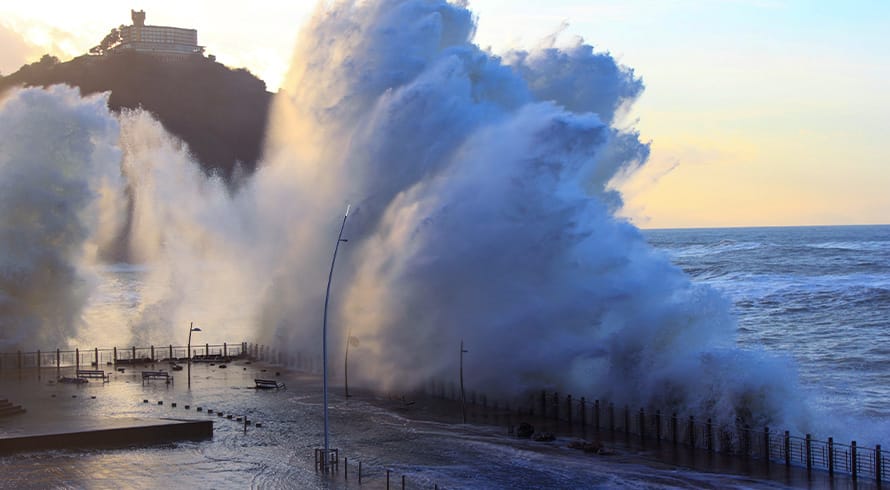PART 8 - Draft Upstream Petroleum Resources Development Bill, 2019: Environmental management and closure certificates
Environmental Management
The principles set out in section 2 of the National Environmental Management Act 107 of 1998 (NEMA), remain applicable to all exploration and production operations, and any other activity relating to such operation, and serve as guidelines for the interpretation, administration and implementation of the environmental requirements under the Petroleum Bill. These principles include, amongst other things, equitable access to environmental resources and the promotion for the participation of all interested and affected parties in environmental governance.
Section 66(1) of the Petroleum Bill, echoes the provisions of the MPRDA, in that the Minister of Mineral Resources and Energy (the Minister) remains the responsible authority for implementing environmental provisions as it relates to exploration and production. In Part 4 of our series of articles, which can be accessed here, we discussed the establishment of the Petroleum and Environmental Committee (Committee), provided for in section 29 to section 35 of the Petroleum Bill. We anticipate that the Committee will play a role in the implementation of environmental provisions under the Petroleum Bill, presumably in an advisory role to the Minister.
Section 66(2) of the Petroleum Bill states that the issuing of an environmental authorisation by the Minister is a condition prior to the granting of a right or the issuing of a permit. Currently, in terms of the MPRDA, activities may not commence until the holder of the right or permit has been granted an environmental authorisation. As discussed in Part 7 of our alert series (which can be accessed here), it would be impractical to require an applicant for a right or permit to obtain an environmental authorisation prior to being granted such right or permit, given the processing timelines stipulated in section 47 of the Petroleum Bill.
Importantly, the Petroleum Bill provides that an environmental management plan (EMP) or environmental management programme (EMPr) which has been approved under the MPRDA, must be deemed to have been approved under the Petroleum Bill, when enacted. However, the provision relating to the Minister issuing a new environmental authorisation, if he is satisfied that the deficiencies in the existing EMP or EMPr has been addressed, has been removed under the Petroleum Bill. This removal seems to support the current practice, in that an environmental authorisation, EMP and/or EMPr is amended in terms of Chapter 5 of the Environmental Impact Assessment Regulations, 2014, to remedy any deficiencies, if any, rather than having a new environmental authorisation being issued.
Closure certificates
The current process for applying for a closure certificate remains, for the most part, the same under the Petroleum Bill. Section 68 states that the holder of an exploration or production right remains responsible for any environmental liability, pollution, compliance to the conditions of the environmental authorisation and the management and sustainable closure thereof, until the Minister issues a closure certificate. A closure certificate must be applied for upon (i) the lapsing, abandonment or cancellation of the right in question, (ii) cessation of the exploration or production operations, (iii) upon the relinquishment of a portion of a block or (iv) the completion of the prescribed closure plan to which a right relates. However, whilst the MPRDA provides that an application for a closure certificate must be made “within 180 days of the occurrence” of any of the aforegoing, the Petroleum Bill states that “an application for a closure certificate must be made to the Petroleum Agency 24 months prior to lapsing, abandonment, cancellation, cessation, relinquishment or completion…”. It seems impractical to require the holders of an exploration or production right to initiate the closure process to a portion of a block, or the block in its entirety, more than 24 months in advance, in order to ensure that the application and the prescribed information, programmes, plans and reports are submitted to the Petroleum Agency 24 months prior to, for example, the lapsing of an exploration or production right. This would require holders to make a decision on whether to renew an exploration right or to allow it to lapse, years prior to its expiry date, which could not have been the intention of the drafters.
Removal of buildings, structures and other objects
Section 69(1) of the Petroleum Bill states that, once a retention permit, exploration or production right has lapsed, been cancelled or abandoned, the former holder thereof may not demolish or remove any building structure or object which (i) may not be demolished or removed in terms of any other law, (ii) which has been identified in writing by the Minister or (iii) which is to be retained in terms of an agreement between the holder and the owner or lawful occupier of the land. A number of questions arise in this regard, which would benefit from clarity. In particular, with reference to production operations, questions such as, who retains ownership of these structures in the event that the right is cancelled or abandoned and who carries the costs associated with the maintenance and upkeep of these structures. Subsection 2 does expressly provide that “production or exploration equipment” is exempted, and may be removed lawfully, however, the term “production or exploration equipment” is not defined in the Petroleum Bill.
Consequences of environmental damage
Section 70 of the Petroleum Bill provides that, in the event that exploration or production operations result in ecological degradation, pollution or environmental damage, or occur in contravention of the conditions of the environmental authorisation, the Minister, in consultation with the Minister of Environment, Forestry and Fisheries, may direct the holder of the relevant right to (i) investigate, evaluate, assess and report on the impact thereof, (ii) take and such measures as may be specified in a directive issued and (iii) complete such measures before a date specified in the directive. If the holder fails to comply with the directive, the Minister is afforded the discretion to take such measures necessary to protect the health and well-being of any affected person or remedy the ecological degradation. The holder will, however, be given the opportunity to make representations before the Minister takes matters into his own hands. Therefore, responsibility is placed on the holders to ensure that the environmental measures are complied with, as the Minister is empowered to recover, from the holder, an amount equal to the funds which were necessary to fully implement the measures on behalf of the holder, should the holder fail to comply with its obligations.
This approach to environmental management provisions and control measures is in line with international law, including the International Convention on Oil Pollution Preparedness, Response and Cooperation, 1990 (the OPRC), which South Africa is party to. Even though South Africa is considered a non-producing nation at this stage, the environmental management provisions and control measures are not dissimilar to those of producing nations. Although not yet enacted, the Marine Oil Pollution (Preparedness, Response and Cooperation) Bill, 2019 (MOP Bill) has been drafted to give effect to South Africa’s obligations under the OPRC, and provide a framework for the development of environmental control measures of international standard. The enforcement of the provisions proposed under the MOP Bill will ultimately require co-operation between various stakeholders, such as the Department of Mineral Resources and Energy, Committee, the Department of Environment, Forestry and Fisheries and the South African Maritime Safety Authority.
Conclusion
As is evident from the above, the South African environmental control measures in the upstream sector are not dissimilar to those of international standards, however, South Africa’s oil and gas operations are still in its infancy stage, therefore the implementation and efficiency of these measures are still to be tested.
An updated version of the Petroleum Bill is expected to be placed before parliament for consideration prior to the end of this year. The public consultation process has resulted in positive changes to the Petroleum Bill. The drafters appear motivated to conclude the legislative process and create regulatory certainty. The CDH Oil and Gas team will keep you updated on the progress of the Petroleum Bill, as this unfolds.
The information and material published on this website is provided for general purposes only and does not constitute legal advice. We make every effort to ensure that the content is updated regularly and to offer the most current and accurate information. Please consult one of our lawyers on any specific legal problem or matter. We accept no responsibility for any loss or damage, whether direct or consequential, which may arise from reliance on the information contained in these pages. Please refer to our full terms and conditions. Copyright © 2025 Cliffe Dekker Hofmeyr. All rights reserved. For permission to reproduce an article or publication, please contact us cliffedekkerhofmeyr@cdhlegal.com.
Subscribe
We support our clients’ strategic and operational needs by offering innovative, integrated and high quality thought leadership. To stay up to date on the latest legal developments that may potentially impact your business, subscribe to our alerts, seminar and webinar invitations.
Subscribe




